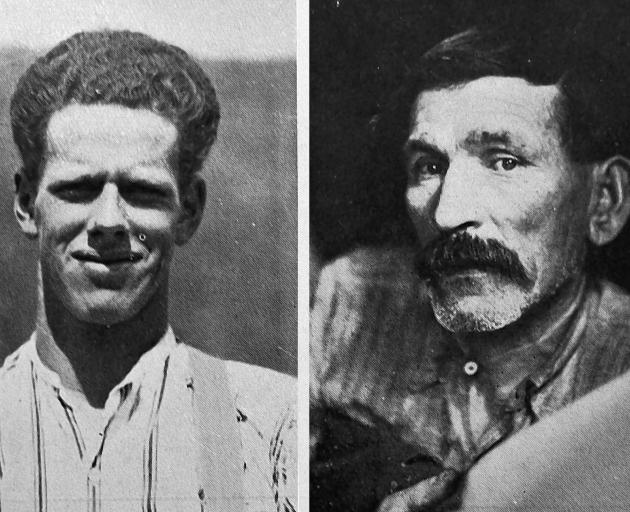
Christchurch, October 4: After nearly 40 hours’ feverish work the two men, Hugh Daly and Gordon Archer, who were entombed in the fall of earth in No 2 tunnel at Lake Coleridge on Friday, were released at 11 o’clock on Saturday night.

The work of rescue was delayed by encountering bad ground and by a number of minor accidents. On Friday afternoon it was considered by the officials that a rescue would be effected by midday, and at that time the rescue party were putting up a record, cutting through from four to five feet per minute. Thereafter the pace slackened down in spite of the redoubled efforts on the part of the men, softer ground being encountered.
At various times during Saturday conversations with the entombed men were conducted through the feed pipe. Daly seemed to be suffering more than his companion, and Archer did most of the talking. From time to time food was sent through, and air was sent in to the men by means of a hand driven fan. The method of rescue was arranged for the greatest possible speed, taking into consideration the fact that another slip might happen at any moment through soft shingle being disturbed. As the hours went by reports came from those working right up at the face that there were only a few feet to go, and finally at about 10 o’clock on Saturday night a needle bar was got through. Archer tapped out directions on this bar and helped considerably in the job of locating the exact whereabouts of the entombed men.
At about 10.50 W. Cooper, who was working in McGuire’s shift, saw Archer through a small opening. It was then the work of a moment to enlarge the gap and rescue the men. There was a great burst of cheering and word was flashed along the 36-chain tunnel and to those waiting at the mouth that the men had been reached. Interviewed, Archer stated that the air had been so bad that candles would not burn. Both he and Daly had suffered from foul air and their heads throbbed violently. Breathing was difficult and they felt as if a tight rope were stretched across their chests.
Archer was working in close contact with Daly, McDonald, McFarlane and Green when the accident occurred. The crown bar came down and then followed a deluge of debris which streamed in the direction of the outlet. Daly wanted to go and help McDonald, but Archer told him the better thing to do was to stay where he was. If McDonald had jumped toward Archer he would have been all right. Green was right in the centre of the fall and McFarlane was further off.
There is no doubt that McFarlane, McDonald and Green are buried in the debris. Work will be commenced immediately digging for their bodies. The accident is not expected to cause much delay to the duplication work.
Waka discovered in forest
Auckland, October 3: An interesting discovery in the Rotorua district is reported by a correspondent of The New Zealand Herald. Hitherto unexplored areas of the vast Kaingaroa Plains, which stretch from Waiotapu Valley to the rugged mountains of Kaimanawa, are being opened up by the Forest Service for afforestation. On September 9 two Forest Service men, Roald Jensen and Charlie Kereope, found under precipitous cliffs remarkable evidence of ancient occupation.
In a rocky amphitheatre, in the bay of one of the deep valleys, some past race had made its habitation. A vast eyebrow of rock, some three chains long, without n break or flaw, juts out over the valley. For 86 feet under this mass a gallery varying in depth from 14ft to 12ft has been formed. The whole of this 86ft is covered with carvings of canoes. There are canoes from 8ft long to 30ft, some in banks of four, one over the other.
They are decorated with spiral carving along the sides, and have a high stern frame, but forward they are not like the accepted form of canoe, but have a beak on the water line and a high projecting platform. They are a replica of a fighting galley, with its raised stand for the boarders. All the canoes, great and small, are fashioned alike. There are 30 of them or more. There are one or two facial carvings, one an obvious tiki, but no animal or anything to connect the carvings with a hunting people.
— ODT, 5.10.1925
Compiled by Peter Dowden












